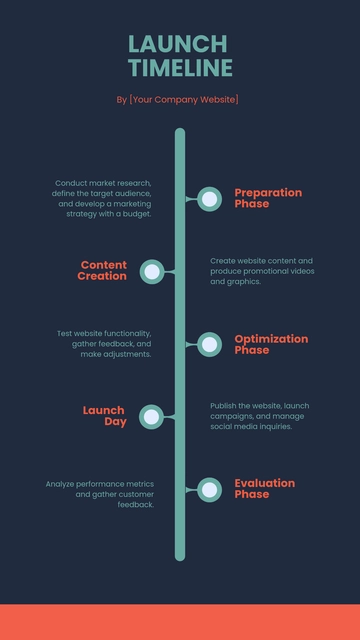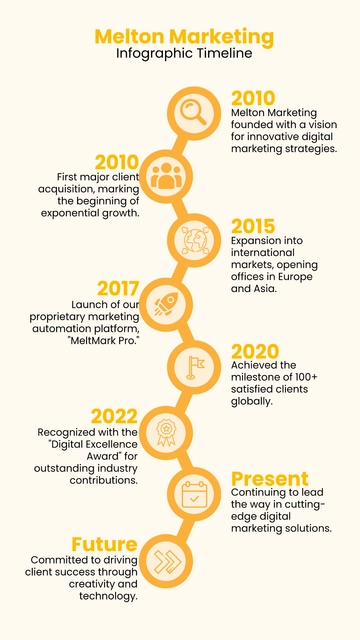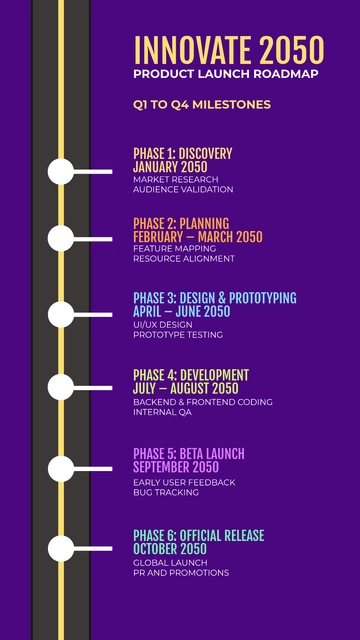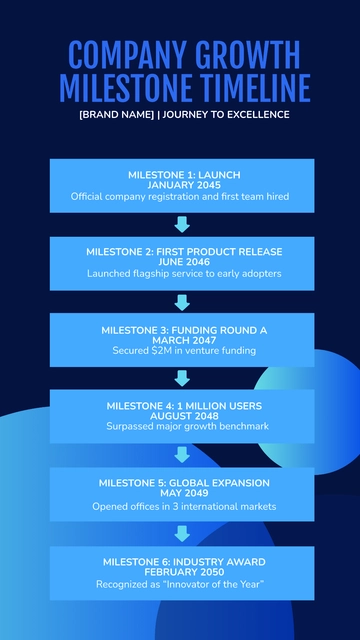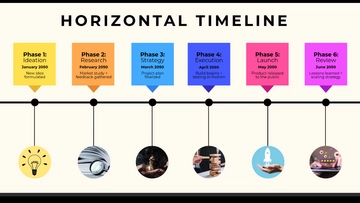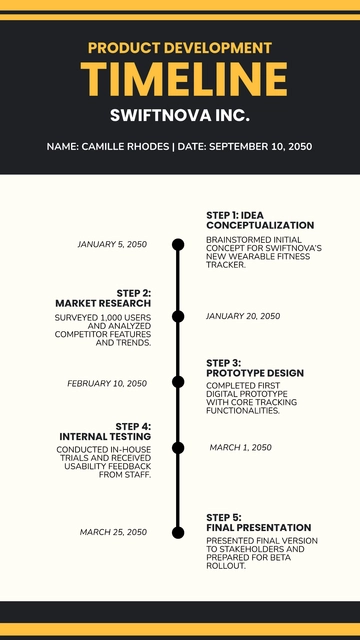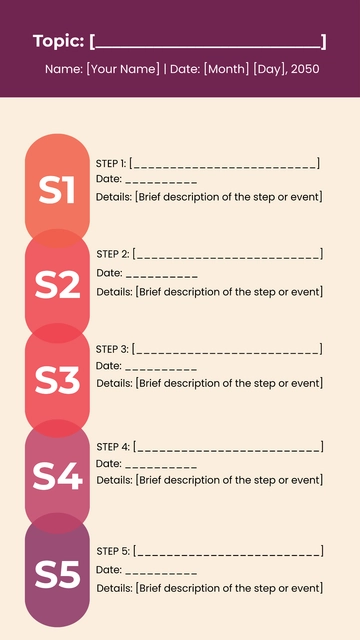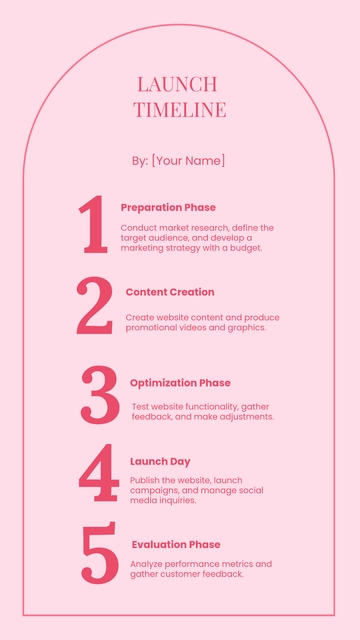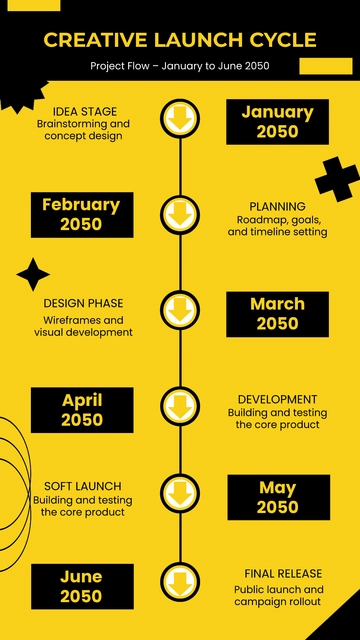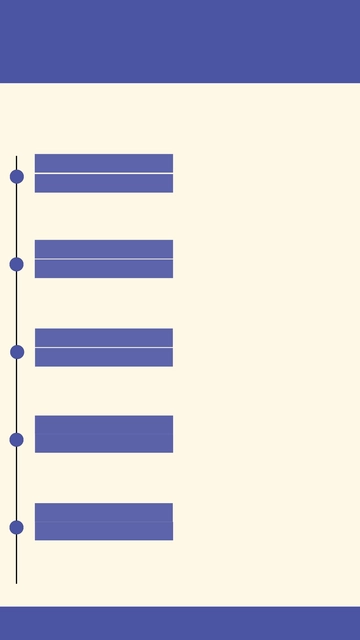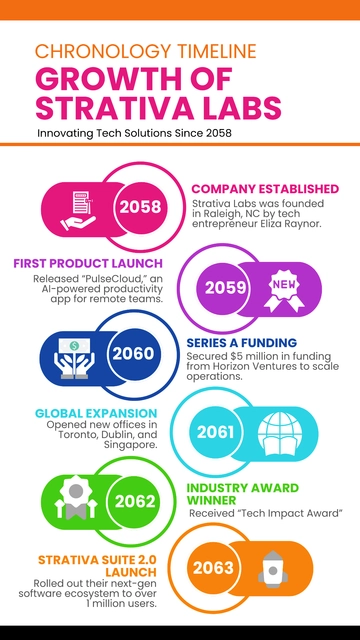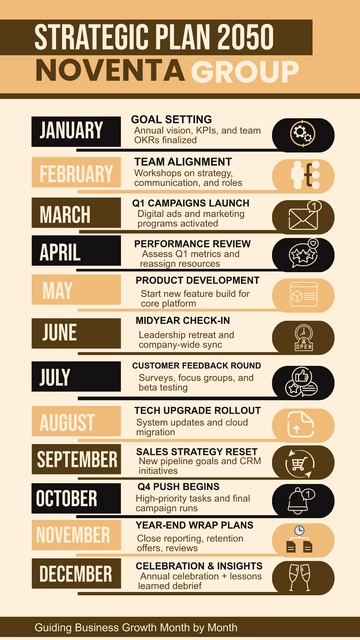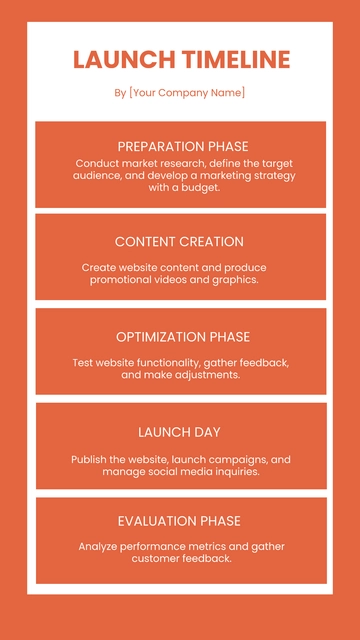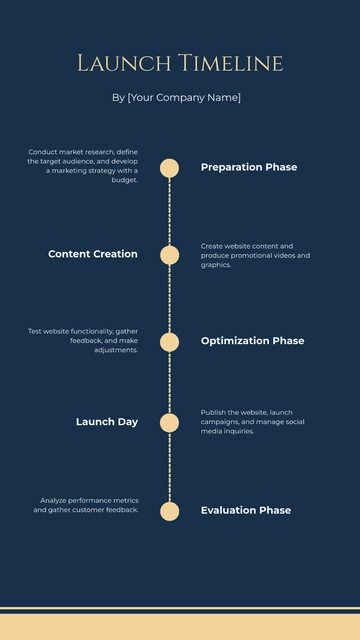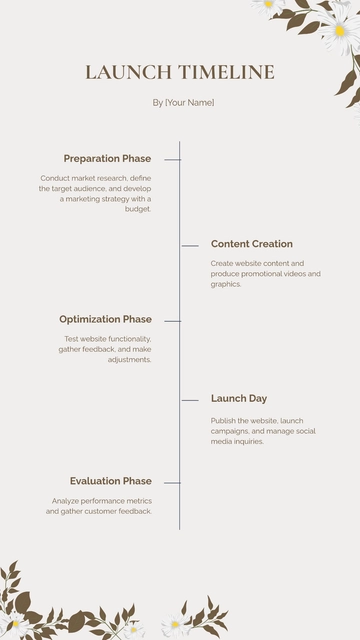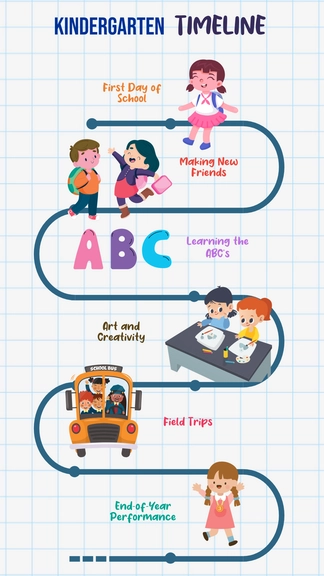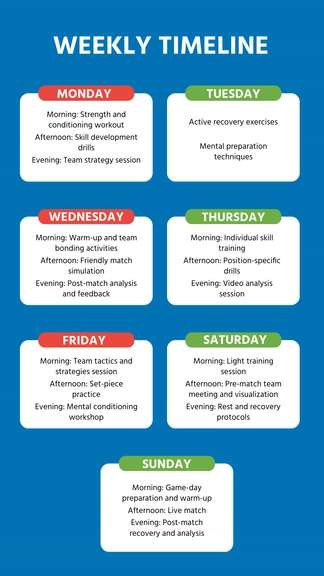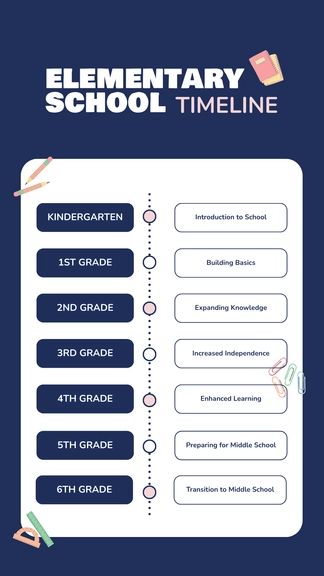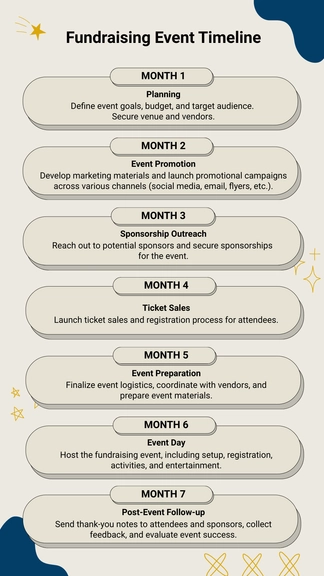Free Pre-Event Marketing Advertising Timeline
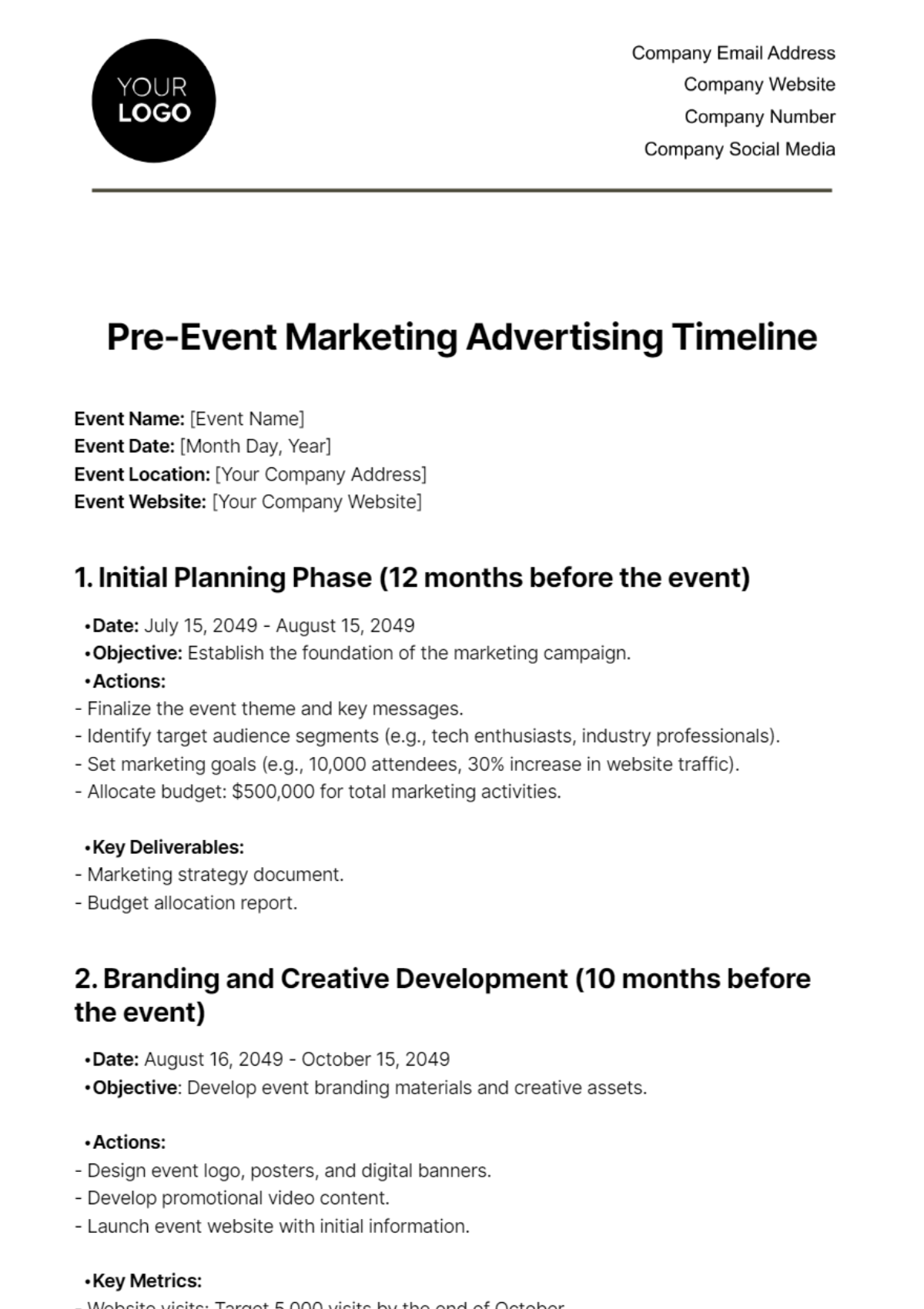
Event Name: [Event Name]
Event Date: [Month Day, Year]
Event Location: [Your Company Address]
Event Website: [Your Company Website]
1. Initial Planning Phase (12 months before the event)
Date: July 15, 2049 - August 15, 2049
Objective: Establish the foundation of the marketing campaign.
Actions:
- Finalize the event theme and key messages.
- Identify target audience segments (e.g., tech enthusiasts, industry professionals).
- Set marketing goals (e.g., 10,000 attendees, 30% increase in website traffic).
- Allocate budget: $500,000 for total marketing activities.
Key Deliverables:
- Marketing strategy document.
- Budget allocation report.
2. Branding and Creative Development (10 months before the event)
Date: August 16, 2049 - October 15, 2049
Objective: Develop event branding materials and creative assets.
Actions:
- Design event logo, posters, and digital banners.
- Develop promotional video content.
- Launch event website with initial information.
Key Metrics:
- Website visits: Target 5,000 visits by the end of October.
- Social media engagement: Increase by 20%.
Key Deliverables:
- Branding materials.
- Website launch report.
3. Early Advertising and Promotion (8 months before the event)
Date: October 16, 2049 - December 15, 2049
Objective: Begin early-stage advertising to generate buzz.
Actions:
- Start social media campaigns on [Your Company Social Media].
- Engage with influencers and industry leaders for promotion.
- Release early bird ticket offers.
Key Metrics:
- Social media campaigns reach: 1 million users.
- Early bird tickets sold: 2,000 tickets.
Key Deliverables:
- Social media campaign analytics report.
- Early bird sales report.
4. Full-Scale Marketing Campaign (6 months before the event)
Date: December 16, 2049 - March 15, 2050
Objective: Intensify marketing efforts across all channels.
Actions:
- Launch email marketing campaigns to the subscriber email list.
- Start paid advertising on search engines and social media.
- Collaborate with [Your Partner Company Name] for cross-promotion.
Key Metrics:
- Email open rate: 25%.
- Paid advertising ROI: 5:1.
Key Deliverables:
- Email campaign performance report.
- Paid advertising analytics report.
5. Final Push and Engagement (3 months before the event)
Date: March 16, 2050 - June 15, 2050
Objective: Maximize registrations and audience engagement.
Actions:
- Host webinars and online Q&A sessions.
- Update website with detailed event schedule and speaker profiles.
- Offer last-minute discounts and group packages.
Key Metrics:
- Webinar attendees: 500 per session.
- Website traffic: 50,000 visits per month.
Key Deliverables:
- Webinar engagement report.
- Website traffic report.
6. Post-Event Follow-Up (1 month after the event)
Date: August 15, 2050 - September 15, 2050
Objective: Gather feedback and maintain audience engagement.
Actions:
- Send thank-you emails to attendees and partners.
- Conduct a post-event survey.
- Share event highlights and media on social channels.
Key Metrics:
- Survey response rate: 30%.
- Social media engagement post-event: Increase by 15%.
Key Deliverables:
- Post-event survey analysis.
- Social media engagement report.
Additional Notes:
Regular team meetings to assess progress and adapt strategies as needed.
Continuously monitor and adjust budget allocations based on campaign performance.
Ensure consistent brand messaging across all marketing materials and channels.
- 100% Customizable, free editor
- Access 1 Million+ Templates, photo’s & graphics
- Download or share as a template
- Click and replace photos, graphics, text, backgrounds
- Resize, crop, AI write & more
- Access advanced editor
Introducing Template.net's Pre-Event Marketing Advertising Timeline Template, your essential tool for flawless event planning. This editable and customizable timeline allows you to map out marketing strategies effortlessly. With our Ai Editor Tool, it's easy to adjust and tailor to your unique needs, ensuring a seamless pre-event marketing campaign. Simplify your planning process today!
